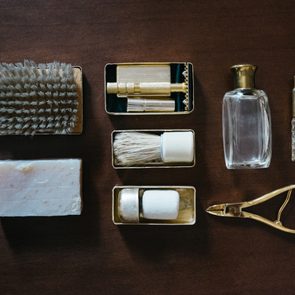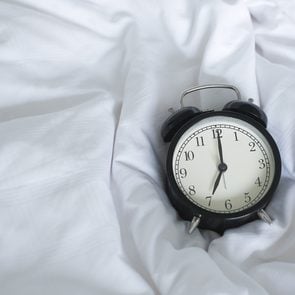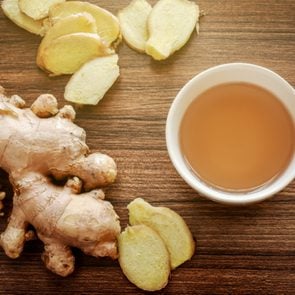
A Lost Campaign Medal Returns Home
The Star was a campaign medal awarded to all soldiers who served with or alongside British forces in the First World War. There were more than two million such medals distributed to those who served and their families, but this is a story of one medal in particular.
In 1949, when my husband Albert was a youngster, he found a Star medal, its ribbon still attached, together with a battered brigade cap, in his hometown of Gadsby, Alberta. As children will do, the hat and ribbon were played with and consequently were lost over time. But Albert kept the medal. He always hoped to one day find the person the medal had been awarded to: James Spiden, according to the inscription.
On Remembrance Day back in 2016, the medal was brought out and the story of its finding was told to our daughter Velvett and her friend, Ellen Peterson. The girls began a quest to find out more about the medal—why it was awarded, and when and how many were issued. That accomplished, they turned their efforts to finding out more about James Spiden. Using the Internet, Velvett and Ellen searched for any Spidens who had immigrated to Canada during and shortly after the First World War. There was only one Spiden listed as coming to Alberta in that time period. Albert called up the number the girls provided him with and—lo and behold—he found himself speaking with the nephew of James Spiden. Unbelievable!
The nephew, who resides in Edmonton, told Albert that James was one of four brothers originally from Sterling, Scotland. He had been a soldier in the 11th Platoon of the Royal Scots Frigates. Unfortunately, James had been killed in 1918, just before the Armistice was declared.
According to the girls’ Internet findings, it seems that many of the 2,860,000 Star medals distributed were awarded posthumously, since they were only introduced in 1918.
How James Spiden’s was lost in Gadsby, Alberta, all those years ago is still a mystery. But Albert is pleased to know that it is now in the hands of the Spiden family. It’s Albert’s hope that the medal will be passed on and cherished by the Spiden family for generations to come.
Next, check out these powerful true stories from Canadian veterans.
More than two decades ago, Pfizer changed the game for men with the erectile dysfunction remedy Viagra. In 2017, the company’s patent on the “little blue pill” expired, and the market changed dramatically again. Pfizer introduced its own generic version at half the price of the original, and more competitors also came onto the market. Viagra and other similar pills are now incredibly easy to get: in some U.K. pharmacies, you can get a version of Viagra over the counter; in the U.S., many people buy it online.
The potential demand for these pills is huge. According to the Massachusetts Male Aging Study—the first large-scale investigation of erectile dysfunction—more than half of men between the ages of 40 and 70 sometimes suffer from the condition.
But that doesn’t mean it’s an unavoidable part of aging. “Older men who are in good health can still have good erections,” says Dr. Guy T’Sjoen, head of the Department of Endocrinology and Center for Sexology and Gender at Ghent University Hospital in Belgium.
Erectile dysfunction causes
Instead, erectile dysfunction is often a sign of an underlying issue. The most serious ones are heart disease, diabetes and high blood pressure. Today, blood isn’t flowing to the penis, but a few years from now, it might not be flowing to the heart. A 2018 study found that men with erectile dysfunction were twice as likely to have a heart attack or stroke over the next four years.
That’s why a doctor will often test for these conditions before looking to other common culprits: medications, such as SSRI antidepressants and blood thinners, or hormonal imbalances, such as a thyroid issue or low testosterone.
Erectile dysfunction can also be caused by an unhealthy lifestyle: obesity, smoking and inactivity all increase your risk. The good news is that weight loss and exercise programs have been proven to help, and smokers—even long-term ones—often see a rapid improvement if they quit.

Medical treatment for erectile dysfunction
And of course, medication is always an option. Drugs like Viagra (a.k.a. sildenafil) work by helping the muscles in the penis relax. That lets in more blood and results in a natural erection in response to being sexually stimulated (just popping the pill alone won’t do it). But sildenafil has to be taken an hour before sex and only works for the next four hours, which some users don’t like because it means you have to time intercourse accordingly.
Another popular drug is tadalafil—sold as Cialis—which doesn’t have those same time limitations. “We call it the weekend pill because it works for 36 hours,” says T’Sjoen. “If you take it Friday afternoon, it’s still working Friday and Saturday night.” For even more flexibility, a lower-dose version can be taken daily.
In addition to medications, T’Sjoen says he always advises men to also speak to a psychologist about performance anxiety, since it often develops during a period of erectile dysfunction.
And he reminds men to not be shy about bringing up problems with their doctors. The drug treatments are easy and effective, and you don’t want to miss a larger issue. “Having an erection is a sign of good mental and physical health, and if you have erectile dysfunction, it’s a warning sign,” he says. “We really encourage men to talk to their GP—it may be a lifesaver.”
Now that you’re familiar with the potential causes of erectile dysfunction, check out 13 sexual health tips your urologist wants you to know.
In 2016, Janice Brisco, a Thornhill, Ontario funeral-home worker in her mid-60s, started finding the occasional bump on her face. They often appeared at bedtime as a single rose-coloured welt, about the size of an insect bite, or a small cluster. By morning, the bumps were usually swollen, red and itchy, and would take a few days to settle down. “I was wondering, do I have bedbugs?” she says. “What in the world is it?”
Although Brisco washed her bedding and mattress cover on a hot cycle, she continued to get outbreaks. They weren’t frequent, only about every other month, but they gradually intensified. Soon Brisco was having episodes in which her entire face was red and swollen. At the end of 2017, the reaction was more severe than ever: her face turned deep purplish-red, her skin drew painfully tight, and her eyelids, hit the hardest, swelled so that her eyes almost closed.
“My husband said I looked like Rocky after a big fight!” she says. “It hurt, and it was quite scary, because I could hardly see.” She booked an emergency appointment with her family doctor, who was alarmed by her condition. He recommended an antihistamine for a suspected allergic reaction and referred her to an allergist for testing. It was two or three days before her skin started to clear up again.
In January 2018, Brisco saw the allergist, who conducted skin prick testing, in which tiny amounts of allergens are scratched into the skin. She had minor reactions to a few substances, like cats and ragweed, but nothing that would account for her attacks. “I was back to square one, not knowing what it was,” she says.
“With contact dermatitis, you’re kind of like a detective”
Shortly after, at a routine appointment with her dermatologist, Brisco mentioned the episodes and shared some photos. Intrigued, the doctor suggested Brisco see Dr. Sandy Skotnicki, a dermatologist in the department of medicine at the University of Toronto. Skotnicki specializes in contact dermatitis, a skin reaction from touching an allergen or irritant—as opposed to an allergy to something eaten or inhaled, which is what the skin prick testing had looked for.
When Brisco finally made it to the top of Skotnicki’s waiting list that August, the doctor was immediately certain the cause was something coming into contact with her skin. “Janice had these dramatic, explosive photos with incredible swelling and weeping,” she recalls. Often, contact dermatitis occurs when something is applied to the skin, such as face cream, especially when people apply these products regularly. Brisco’s reactions, being intermittent, didn’t fit. Brisco couldn’t think of anything she used only sporadically. But without answers, she risked steadily worsening reactions, as her immune system learned over time to build an ever-stronger response.
Skotnicki decided to conduct patch testing. Flat, square packets, less than a centimetre in size and each holding a pad soaked with a tiny amount of a specific substance, are taped to a patient’s back for 48 hours and then removed. After another 48 hours, the patient is examined for reactions. Dozens of substances can be tested at once, but since there are several thousand potential skin allergens, the dermatologist must decide which sets (called “trays”) to use. Skotnicki has special trays for hairdressers, mechanics and other occupations; she asks about hobbies like painting and stamp collecting. “With contact dermatitis, you’re kind of like a detective,” she says.
She started Brisco with the standard tray of 85 substances, including cosmetic ingredients and clothing dyes. “My whole back, shoulder to shoulder, down almost to my waist, was covered with little white square patches,” says Brisco. Aside from the itchy adhesive tape, she couldn’t tell what was happening under the patches for the first two days. But after these were removed, while Brisco waited for her follow-up appointment, she saw in the mirror that some squares of skin were obviously inflamed.
When you’re allergic to essential oils, diffusers can be dangerous
When Brisco came in for her exam, Skotnicki noted where her skin had become an angry red and covered in a rash. Brisco tested positive to lavender and lemongrass, and was most highly allergic to ylang-ylang, a tropical fragrant tree whose extract has gained popularity as a beauty-product ingredient. The substances Brisco had reacted to are found in shampoos and perfumes, but they had something else in common: they’re sold as essential oils. At a recent conference, Skotnicki had learned about a rising incidence of allergic patients who used diffusers, which disperse essential-oil particles into the air to benefit mood or mental function. Now, she questioned Brisco.
“I was diffusing daily,” Brisco says, who’d started using an array of essential oils a couple of years before the bumps first appeared. The oils had been recommended by a neighbour, and Brisco quickly became a fan, using different kinds for different reasons. She used citrus oils like lime or grapefruit as mood boosters, and she found peppermint invigorating. And then, on occasion, she’d used the offending lavender to help with sleep, or blends that included ylang-ylang as a pick-me-up.
Of course, when essential oils are launched into the air, they come into contact with skin. “The eyelids are so thin, they get allergic reactions first,” says Skotnicki. If Brisco had continued using the oils, the reactions would have become more extreme over time, and the itchy rashes would have spread to other areas, like her ears and neck, and become debilitating. Around two to four per cent of the population is allergic to chemicals in their day-to-day products, often without knowing it, says Skotnicki. “They suffer for a long time.”
Armed with her diagnosis, Brisco can now safely avoid the essential oils she’s allergic to, and she’s careful not to get too close to her diffuser. She also uses fragrance-free beauty and cleaning products.
It’s been a lesson for Skotnicki, too. “After Janice, I’ve asked every patient about essential oil diffusers!”
Next, read up on the skin changes you should never ignore.
Sipping chamomile tea is an often-cited home remedy for better sleep—brew a cup before bed and feel sleepy and relaxed by the time your head hits the pillow. But the tea’s benefits go beyond soothing restless minds. And it’s all thanks to the tiny chamomile flower.
Chamomile is an herb that produces small white flowers that may seem insignificant but have been used throughout history to make teas, tinctures, and liquid extracts.
“Chamomile has been used extensively over the centuries for many conditions, especially prior to modern medicine,” says Brenda Braslow, a Colorado-based registered dietitian nutritionist with the nutrition tracking app MyNetDiary.
She names headaches, anxiety, insomnia, skin conditions, and reproductive disorders as among the conditions chamomile is used to treat. Those, and belly aches.
“Chamomile is used traditionally for numerous gastrointestinal conditions, including digestive disorders, ‘spasm’ or colic, upset stomach, flatulence [gas], ulcers, and gastrointestinal irritation,” says Vanessa Rissetto, a registered dietitian and cofounder of Culina Health in New York City and Hoboken, New Jersey.
What is chamomile?
The herb is part of the Asteraceae family, which also includes the purple coneflower (Echinacea), marigold, daisy, and sunflower.
There are two main varieties of chamomile. English, or Roman, chamomile (Chamaemelum nobile) is native to Western Europe and Northern Africa. German chamomile (Matricaria chamomilla) is typically found throughout Europe and Asia.
Both are similar in their medicinal properties, but their growing needs and appearances are a bit different. German chamomile tends to have feather-like leaves, while Roman chamomile has foliage more reminiscent of a fern.
Chamomile can easily grow unnoticed in a backyard or in the wild, with humble flowers that don’t rival its showier cousins.
The tea you drink is made from those flowers, each tiny and white petaled with a yellow centre. They’re harvested and dried before being sold as loose-leaf tea or scooped into teabags. (Find out more medicinal plants you can grow at home.)
Chamomile benefits
Chamomile contains compounds that may boost your health.
“The petals contain many bioactive chemicals, such as apigenin, quercetin, and nobilin, which have been shown to have a range of potential benefits, ranging from calming effects to helping with sleep to starving cancer to reducing gastrointestinal upset,” says William Li, MD, a physician, scientist, and author of Eat To Beat Disease.
Braslow agrees that chamomile can potentially help your health. “Chamomile tea contains many antioxidants and anti-inflammatory compounds,” she says.
But before you load up on the tea, know this: research on chamomile’s benefits is far from conclusive.
Although there are some short-term studies that highlight the effects of chamomile, more long-term studies and human trials are needed before scientists can draw any concrete conclusions.
Still, the seven potential chamomile benefits below may convince you to brew some chamomile tea tonight.
Eases menstrual cramps
Each month, give or take, women can have some not-so-pleasant cramping due to their periods. Chamomile has antispasmodic properties, which means it might relieve pain from muscle spasms.
“Chamomile contains a bioactive chemical called spiroether, which has antispasmodic effects. This is thought to be why chamomile can help alleviate menstrual cramps,” says Dr. Li.
There have been more than 20 clinical trials conducted looking at chamomile as a source of relief for premenstrual cramps, and evidence shows it can reduce the severity of PMS symptoms, he says.
May help the heart
“The antioxidant activity of chamomile also may protect the vascular cells lining blood vessels, which is critical for heart health,” says Dr. Li, who is also the president and medical director of the Angiogenesis Foundation, which focuses on medicine that relates to the growth of new capillary blood vessels in the body. The key antioxidants are flavonoids, plant compounds found in many fruits and vegetables. They’re believed to provide health benefits.
“It has been suggested that regular use of flavonoids consumed in food may reduce the risk of death from coronary heart disease in elderly men—and chamomile has a fair amount of flavonoids,” says Rissetto. (Find out the 50 best foods for your heart.)
Helps you get better sleep
Chamomile is often associated with aiding insomnia and for getting a good night’s rest.
“Chamomile has been shown to improve sleep quality, especially in the elderly. The effect is thought to be due to the bioactive apigenin that binds to the benzodiazepine receptor in the brain,” says Dr. Li. “These are the same brain receptors that are activated by medications sometimes used to aid sleep, like Xanax and Valium,” Dr. Li says.
In 2014, a randomized control trial was conducted on 77 elderly individuals in a nursing home to test if chamomile extract could help improve sleep quality. The results, which were published in 2017 in the Journal of Education and Health Promotion, showed chamomile had sedative properties.
Still, more studies are needed before we know for sure whether chamomile can help you catch some Zzz’s. (Following this sleep hygiene checklist may also help.)
Improves digestion and upset stomach
For ages, chamomile tea or herbal infusion has been drunk as a folk remedy for easing an upset stomach and aiding digestion.
“Chamomile has been used for centuries by people to soothe their stomach and to treat a variety of digestive issues, including upset stomach, gas, and ulcers,” says Braslow.
The same properties that make chamomile a good choice for period cramps help tummy aches too. “The antispasmodic properties of spiroether, which is found in chamomile, help to explain its benefits for an upset stomach,” says Dr. Li.
Animal research shows chamomile may reduce stomach acid, but more studies need to be conducted on humans, says Braslow.
But there’s little harm (more on that below) in sipping a chamomile drink when you have a belly ache. “If you have an occasional stomach upset, it may be helpful to drink a cup of chamomile tea,” she says. (Find out more home remedies for nausea.)
May ease stress and anxiety
“One of the natural bioactive chemicals in chamomile is apigenin, which can activate brain receptors that help reduce anxiety and induce sleep,” Dr. Li.
Chamomile probably won’t replace your anxiety meds (nor should it), but it might be an add-on treatment for easing stress and anxiety. “It might be useful to drink chamomile tea to calm your nerves when you have occasional anxiety or stress,” says Braslow. “However, there is limited research with small sample sizes to support its use for treating anxiety disorders.”
May help the immune system
“Chamomile has been shown to lower inflammation, which is part of the immune system, which may explain its benefits for relieving the symptoms of a cold,” says Dr. Li. (Here are eight science-backed ways to naturally boost your immune system.)
Remedies acne
Occasionally, chamomile is used as a remedy in the form of a salve or paste to treat acne.
“Chamomile has antibacterial and anti-inflammatory properties, so it is commonly used topically to treat acne,” says Braslow.
That said, you’ll definitely want to consult with a pro before covering your face in chamomile.
“While a paste made with ground chamomile may have anti-inflammatory properties, you should consult with a dermatologist to decide if this is the best way to treat the skin,” says Dr. Li.
Risks or side effects
Like other herbs and medications, chamomile can have side effects. Here are some allergies and risks to pay attention to.
It might cause allergies
There is always a possibility someone can have an allergy to chamomile.
“Chamomile is in the same family as ragweed, chrysanthemums, marigolds, and daisies, so it could potentially cause an allergic reaction in individuals allergic to these plants, which could occur when taken orally or used on the skin,” says Braslow. “Allergic reactions could include chest tightness, wheezing, skin irritation, rash, hives, itching, and vomiting.”
If you have hay fever, you may want to check if you’re allergic to chamomile by getting an allergy test at the doctor’s office before you start drinking the stuff.
“People who have severe hay fever may have an allergic-type reaction to chamomile,” says Dr. Li.
It’s pretty rare for anyone to have a severe allergic reaction to chamomile, but it can happen.
“According to the National Center for Complementary and Integrative Health [NCCIH], there have been a few reported cases of severe allergic reactions occurring after persons consumed chamomile products,” says Braslow. (Find out how one woman discovered she was allergic to essential oils.)
It can thin blood
Chamomile has coumarin in it, a natural blood-thinning substance.
“It should never be used by people taking blood-thinning medication, like Coumadin, because it could have a dangerous additive effect,” says Braslow.
Its ability to thin the blood is why you should stop using it two weeks before or after surgery, she says.
It can cause drowsiness
Chamomile can make you sleepy or drowsy. While that makes it a good beverage to sip before sleep, it’s a reason to avoid the tea before driving.
“Because chamomile can cause drowsiness, it should not be taken before driving or operating heavy machinery,” says Dr. Li.
How much chamomile tea should you drink?
“Drinking one to three cups a day of chamomile, especially if one is before bedtime, may be beneficial for its calming effects,” says Dr. Li.
For health benefits, such as to treat occasional anxiety or stress or to soothe an upset stomach, it may be helpful to have a cup of chamomile tea, according to Braslow.
“As with anything,” she says, “moderation is always wise to prevent any undesired side effects.”
What to know before you buy
It’s important to do your research and speak with medical professionals before using herbs and herbal supplements, especially if you’re aiming to treat specific health conditions.
“Unlike medications, herbal supplements are not regulated with oversight for quality control, for the accuracy of a specific substance quantity, or the presence of other ingredients,” says Braslow. “Basically, you are on your own to monitor whether you derive benefits, will have herb-medication side effects, or have negative side effects from taking it.”
But before you start drinking chamomile tea or taking other forms of chamomile, speak with your health care provider, especially if you have a health condition or are taking medications.
“If you have medical conditions or take other medicines, it is smart to ask your doctor or pharmacist if it is safe for you to take chamomile, especially if you are planning to take a potent extract of chamomile in the form of a tincture or supplement,” says Braslow.
Next, find out what happens to your body when you drink tea every day.











